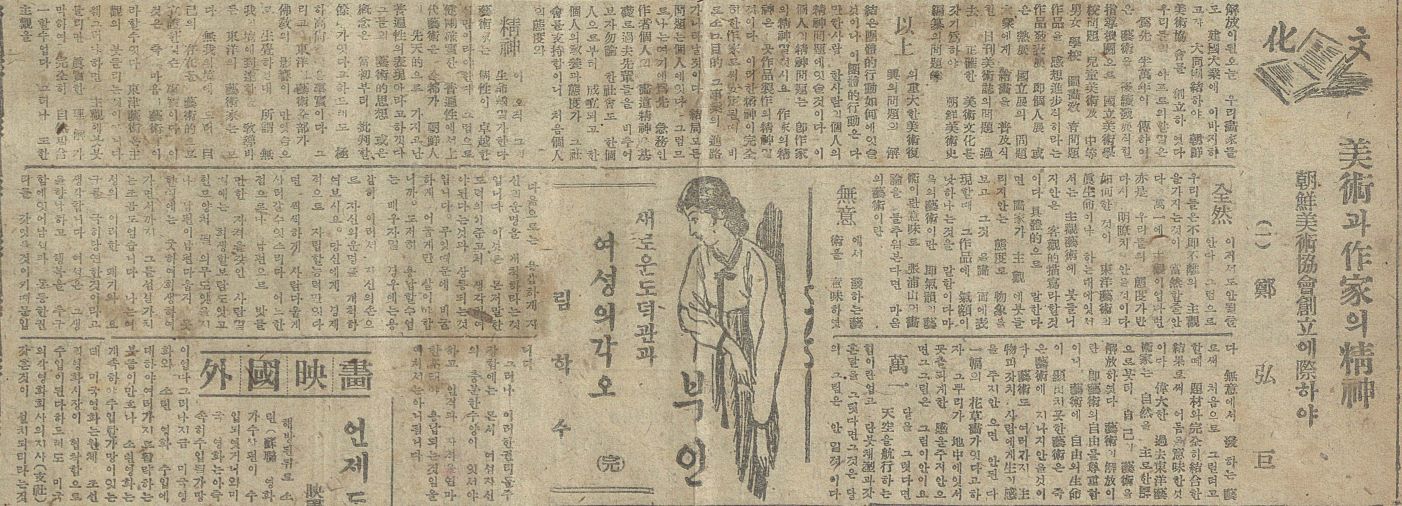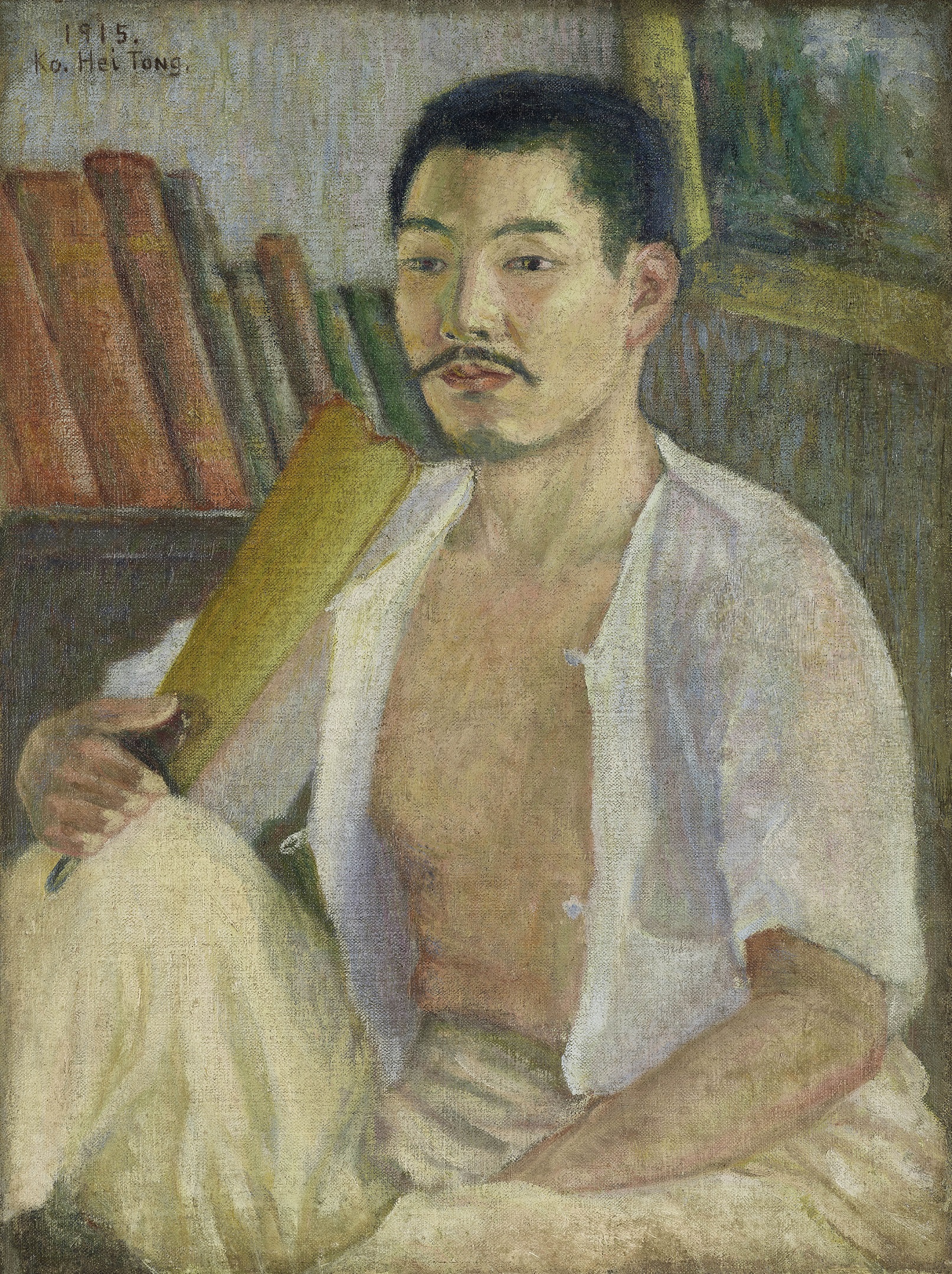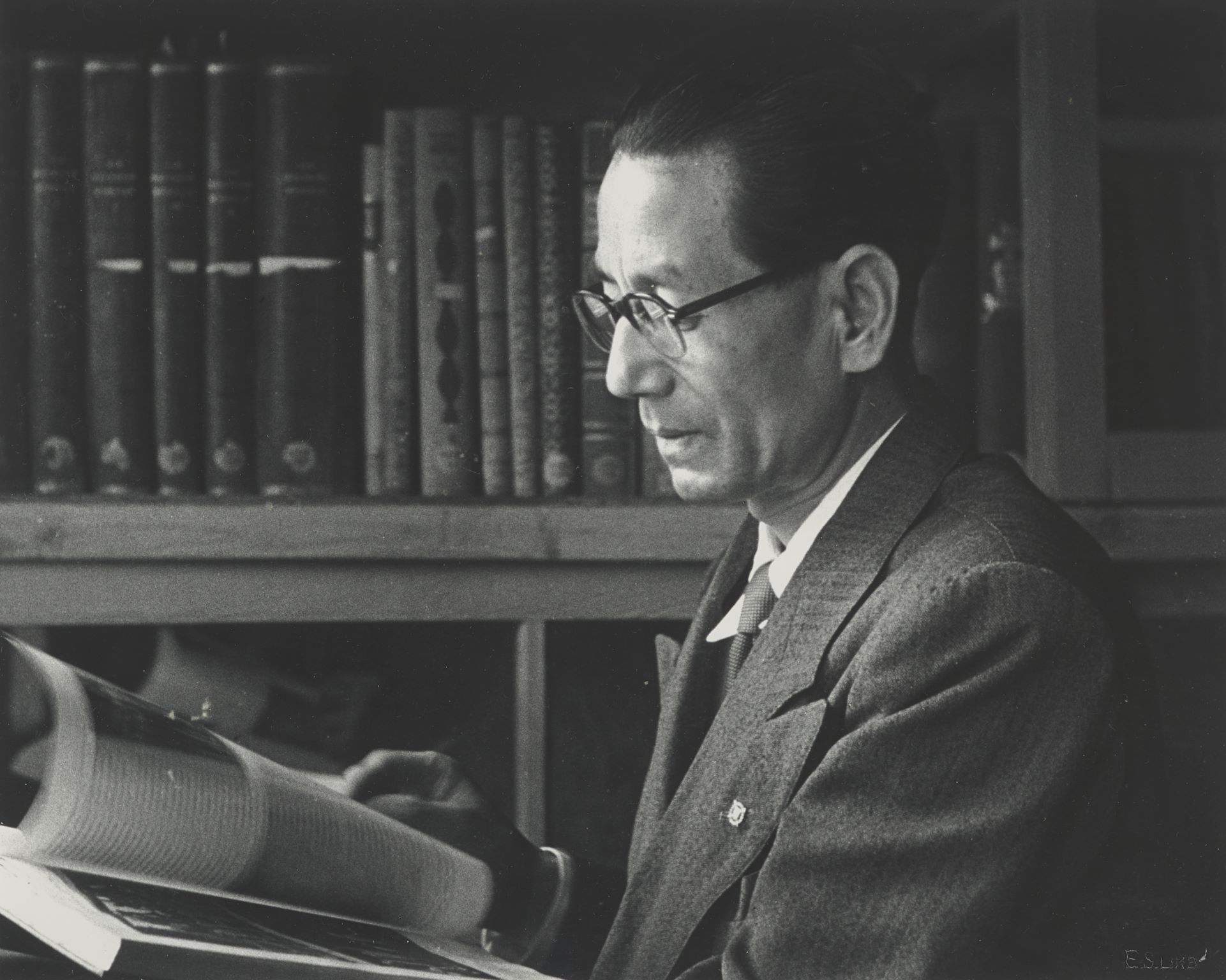
The Seventh Great Korean Art Association Exhibition, Brochure, 1955, MMCA Art Research Center
Great Korean Art Association
* Source: Multilingual Glossary of Korean Art. Korea Arts Management Service
Related
-

Korean Art Association
An organization established in 1945 under the leadership of Ko Huidong after the Headquarters for the Korean Art Construction Headquarters (Joseon misul geonseol bonbu), the largest art organization of the time, disbanded. Criticizing the political activism of the Korean Art Construction Headquarters, the Korean Artists Association avowed political neutrality Ko Huidong was the president of the association, and famous artists of the time such as Lee Chongwoo, Kim Yongjun, Kim Jukyung, No Soohyeon, and Gilbert Pha Yim all participated in the association. The association claimed to be the successor of the Society of Painters and Calligraphers, which was active from the late 1910s to the 1930s. The association planned the establishment of art schools, the publication of books on art history, the holding of exhibitions, and the publication of art magazines. Contrary to its avowed political neutrality, however, Ko Huidong, who held right-wing beliefs, continued with his pro-government activism, and numerous members who opposed this left the association to form the Korean Art Alliance (Joseon misul dongmaeng) in 1946.
-

Korean Artists Association
An artist association formed in 1955. The core of the association comprised faculty members of the Seoul National University College of Fine Arts. The election of Ko Huidong as the chairman of the Great Korean Art Association (Daehan misul hyeophoe) despite his failure to win the majority vote led the supporters of Chang Louis Pal to leave the association and form the Korea Artists Association. Chang Louis Pal, the first chair, created the photography division, which was absent from the Great Korean Art Association Exhibition, and the architecture division. He also reinstituted the calligraphy division, which had been closed. At the time of establishment, the stated ideology of the association was four-fold: to develop and improve national culture through progressive ideology; to maintain purity of attitude toward the creation and the presentation of art; to actively support the work of new generations; and to achieve, without delay international partnerships with other artists groups and organizations around the world. In 1961, the association was merged into the Korean Fine Arts Association alongside the Great Korean Art Association due to the government policy of consolidating art organizations.
Find More
-

Ko Huidong
Ko Huidong (1886-1965, pen name Chungok) was born in Seoul and graduated from Hanseong French Language School. He worked as an interpreter and was appointed as a government official of the Korean empire. In 1907, he began to learn painting from An Jungsik and Cho Seokjin. He visited Japan to study art in 1909 and later attended Tokyo School of Fine Arts where he studied oil painting. The advent of Japanese colonization in 1910 caused him to lose his position as a government official and he became a student. He graduated in 1915. A Self-portrait with Jungjakwan (traditional Korean hat for government officials) reflected his self-consciousness of his former role as a government official of the Korean empire. His oil paintings, such as A Self-portrait with Durumagi (traditional Korean overcoat) or A Self-portrait Holding a Fan, are currently owned by the MMCA in Gwacheon. In the 1920s, he stopped creating Western paintings due to the lack of understanding of people around him. After this period, he focused on Eastern paintings depicting subjects such as Geumgangsan Mountain or other nativist landscape themes. He organized the Calligraphy and Painting Association [Seohwa hyeophoe] with An Jungsik, Cho Seokjin, and Lee Doyoung and worked as a secretary of that Association's exhibitions. He was acquainted with numerous other artists and he actively participated in political activism in the modern painter’s circle in Korea. Following the example of his father Ko Yeongcheol, a member of Yukgyo Poetic Gathering [Yukgyo sisa], he also interacted with other artists, such as Oh Sechang. He helped to organise artists as a chair of the Great Korean Art Association [Daehan misul hyeophoe] and later was appointed as a senator. In 1954, He was selected as the first chairman of the National Academy of Arts. His universal significance can be seen in his crucial contribution to the establishment of the first association of Western painting artists and modern artists in Korea.
-

Chang Louis Pal
Chang Louis Pal (1901-2001) was the first Korean artist of religious paintings and an art educator. He was born into a second-generation Catholic family as the second son of Hwang Lucia and Chang Gibin, who moved from Pyongnam to Incheon and worked at the maritime customs office. He studied under Ko Huidong at Whimoon High School. At the time of graduation, he became a member of the Goryeo Painting Association [Goryeo hwahoe]. In 1920, he enrolled in the Western Painting Department at the Tokyo School of Fine Arts, but in 1921 he moved to the U.S. and studied for a year at the New York National Academy of Design. From 1923 through 1925, he took practical and theoretical art courses provided by the Art Department of the School of Practical Arts at Columbia University’s Teachers College. On their way back home from studying abroad in 1925, he and his older brother Chang Myon stopped at the Vatican and attended the ceremony for the beatification of seventy-nine blessed Korean martyrs. After returning to Korea, Chang participated in the Calligraphy and Painting Association [Seohwa hyeophoe] exhibition and the Mogilhoe Association. At the same time, he focused on creating religious paintings. He served as a teacher at Whimoon High School, Gyeongsin High School, and the Dongseong Commercial School and as the first principal at Gyemyeong Girls’ Commercial Training School. After Korea’s liberation from Japan, he was appointed to the head of the Education Bureau of the U.S. military government. While working there, he established the Art Department within the College of Fine Arts of Seoul National University and became the dean of the College of Fine Arts. He was also influential in art administration, as shown in the establishment of the National Art Exhibition (Gukjeon) and his participation in the Arts Council. In 1950, he founded the Korean Catholic Artists Association; in 1955, he led the formation of Korean Artists Association [Hanguk misulga hyeophoe]; and in 1960, he supervised the design of Hyehwa-dong Cathedral and the production of its sculptures. Among his notable works are Saint Sisters Kim Colomba and Kim Agnes (1925), Fourteen Apostles (1925–1926), a mural for the altar in Myeongdong Cathedral, Saint Kim Daegeon Andrea (1928), Christ Crucified (1941), and The Annunciation (1945), an altar painting at the Convent of the Order of Discalced Carmelite. In 1961, he resigned from his teaching position and was about to be appointed Ambassador Extraordinary and Plenipotentiary to Italy, but his political career was thwarted by the May 16 military coup d'état. After emigrating to the U.S. in 1964, he held a solo exhibition at Shinsegae Gallery in 1976 with his abstract expressionistic works. He died at his home in Pittsburgh, Pennsylvania, on April 8, 2001, five days after celebrating his 100th birthday.






